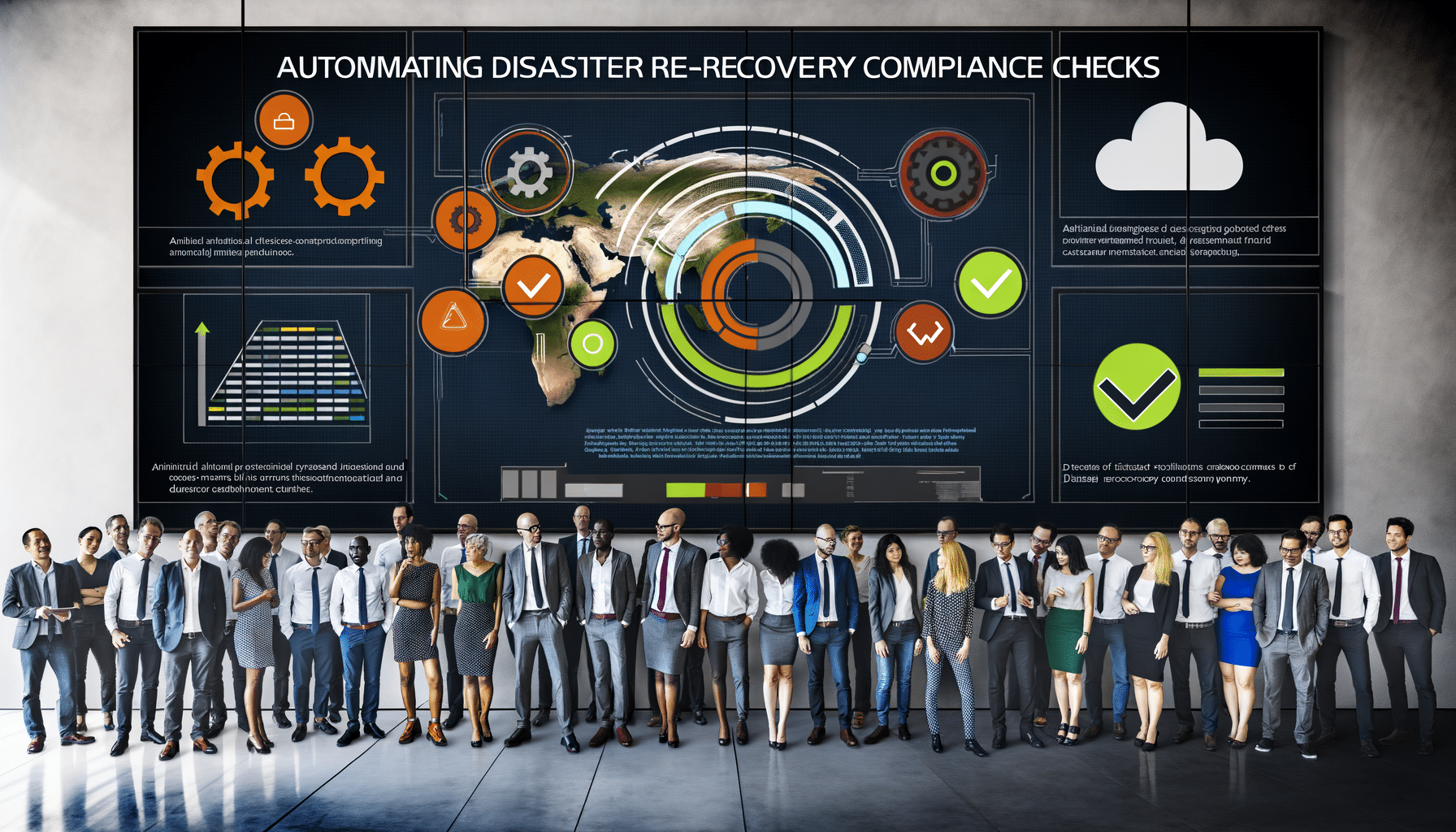- Legal Technology
- November 16, 2024
Automating Disaster Recovery Compliance Checks

Revolutionizing Disaster Recovery Compliance with AI
We live in an era where data is as vital as the air we breathe. With organizations generating and handling massive amounts of data, ensuring its safety and compliance during disasters is more critical than ever. But let’s face it, traditional methods of managing disaster recovery compliance can be a time-consuming and error-prone task. This is where AI steps in.
The Complexity of Traditional Compliance Checks
Being in the tech industry for quite some time, I’ve seen firsthand how cumbersome and inefficient it can be to manually ensure disaster recovery compliance. Compliance checks often require cross-department coordination, reviewing complex policies, and continuous monitoring, which quickly becomes overwhelming. When you’re dealing with regulations like GDPR or HIPAA, even minor lapses can lead to significant consequences.
The Need for Automation
This leads us to the need for automation. In a world of endless data and countless regulations, we cannot afford to ignore the advantages of using technology—especially AI—to safeguard our data. But before diving into how AI can transform disaster recovery, let’s understand what disaster recovery and compliance checks traditionally entail.
Traditional Disaster Recovery
These steps, although essential, hold potential pitfalls without automation. This is especially true when human error, regulatory updates, and growing data add complexity.
Enter AI: The Game Changer
Now, imagine a system that could automatically manage these tasks, thereby reducing the laborious burden on your team. That’s the promise AI brings to the table when applied to disaster recovery and compliance checks.
AI-Driven Disaster Recovery
Automated Categorization: AI can classify and tag data, ensuring that critical information is prioritized for backup based on its sensitivity and importance.
Predictive Analysis: Through machine learning, AI can predict patterns and potential failures, enabling preemptive actions to secure data integrity.
Enhancing Compliance with AI
Automation of Regulatory Workflows: AI can track regulatory changes and automate compliance processes. This keeps your organization always ready for audits.
Continuous Monitoring: AI provides real-time monitoring to ensure that compliance standards are met continuously, flagging any deviations immediately.
Audit-Ready Reports: AI can generate detailed, audit-ready reports, reducing the time and effort required to prepare documentation for compliance checks.
The Strategic Edge
Automating disaster recovery compliance with AI doesn’t just simplify these tasks. It transforms them into strategic advantages:
What Lies Ahead
It’s no exaggeration to say that AI is redefining how we approach disaster recovery and compliance. By implementing AI-driven solutions, organizations can ensure data integrity, safeguard compliance, and maintain public trust—especially when handling sensitive information.
The tech world is evolving, and so should our approach to managing critical data and compliance. As I reflect on the strides we’ve made at RecordsKeeper.AI, I am excited about the boundless possibilities AI offers. Today’s challenges become tomorrow’s history when innovation is harnessed effectively.
Conclusion
In conclusion, AI-driven automation is not just a nice-to-have but a necessity for businesses serious about securing data and adhering to compliance standards. By embracing these technologies, you are not only safeguarding your organization’s future but also positioning it for growth and success.
Feel free to reach out and connect with me for more insights into how we can tackle these and other tech challenges. Together, let’s lead this digital revolution forward.
Toshendra Sharma is the visionary founder and CEO of RecordsKeeper.AI, spearheading the fusion of AI and blockchain to redefine enterprise record management. With a groundbreaking approach to solving complex business challenges, Toshendra combines deep expertise in blockchain and artificial intelligence with an acute understanding of enterprise compliance and security needs.
Related Posts

Managing Records During IT System Changes
Keeping records accessible during system updates.
- December 11, 2024

AI for Dynamic Data Masking in Sensitive Records
Protecting sensitive records through dynamic data masking with AI.
- November 16, 2024
Archives
- December 2024
- November 2024
- October 2024
- September 2024
- August 2024
- July 2024
- June 2024
- May 2024
- April 2024
- March 2024
- February 2024
- January 2024
- December 2023
- November 2023
- October 2023
- September 2023
- August 2023
- July 2023
- June 2023
- May 2023
- April 2023
- March 2023
- February 2023
- January 2023
- December 2022
- November 2022
- October 2022
- September 2022
- March 2019
Want to get more content like this?
Signup to directly get this type of content to your inbox!!
Latest Post
Organizing External Auditor Access
- December 22, 2024
Document Control in Manufacturing Plants
- December 21, 2024
Handling Rush Financial Report Requests
- December 20, 2024
Managing Record Access After Staff Changes
- December 19, 2024





